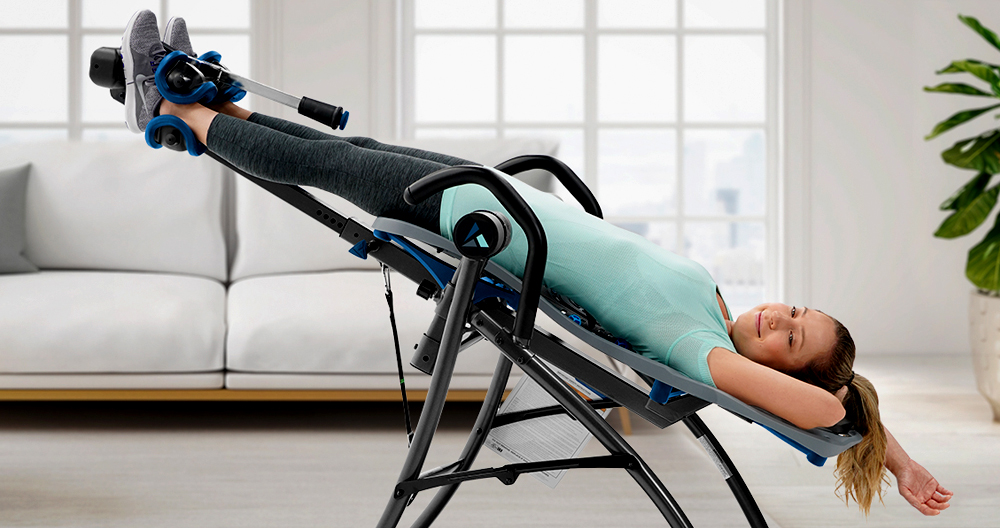
Every medical professional who has treated a large number of spine patients will have been asked this question: “Do inversion tables work?” There have been many studies that show inversion tables are effective for chronic and acute pain. Even the best-designed studies have not shown any long-term benefits to inversion therapy.
Many patients who are seen in clinic settings will not believe this. Many patients with spinal problems have relied on an inversion table to provide relief for years. Some people inquire about the therapy through friends, family members, and neighbors who have heard that it can relieve their pain.
Inversion theory dates back to Hippocrates in 400 BC, who was the Father of Medicine. To “stretch” the spine, Hippocrates used ladders to hang people upside-down. Modern inversion techniques are safer, more comfortable, better, and more secure. Traction refers to the use of gravity to gradually stretch the spine. This allows for more space for the nerves and ligaments. The disc is the space between the spine’s bones. The disc can become more compressed over time due to gravity, poor posture, and exercise. This can cause back or leg pain. These effects can be reversed by traction therapy and inversion tables. This seems to provide temporary relief for many patients. These patients experience pain that returns to normal when gravity returns pressure to their lumbar structures.
Although inversion tables and traction devices are generally safe, some patients should not use them. Inversion table therapy should not be used on patients with hypertension, circulatory disorders, glaucoma, retinal detachments, and circulation disorders. Inversion table therapy can cause increased pressure and blood flow to the eyes and head by hanging upside down, partially or fully.
Your vertebrae are protected by the shock absorbers provided by your discs. The nucleus and the annulus are the main components of discs. Imagine a Twinkie-shaped disc. The annulus is the yellow cake, and the nucleus the cream filling. The nucleus, instead of cream filling, is made from a jelly-like material which provides flexibility and “cushioning”, in your back.
What is a herniated disc?
A herniated disc is also known as a slipped or bulged disc. The disc’s cream filling (nucleus), pops out through the annulus. The diagram shows that there are nerves running through the vertebrae. When a disc is herniated, the cream filling (nucleus) can push through the yellow cake (annulus). A herniated disc can lead to “pain, weakness or numbness in one’s arm or leg.” Many people don’t experience any symptoms after a herniated disc. A herniated disc is not something that should be treated.
Inverting on an inversion table can help to relieve pressure from your discs by decompressing them. The discs will naturally heal if they are freed from the pressure. The disc can be irritated by the slight increase in space between the vertebrae. This may encourage the nucleus to return back to its original place.
How to use Inversion Tables to Lower Back Pain
Inversion therapy is recommended for most patients for at least 2 weeks. It should be done for 10 minutes two times per day. Do not go below 45 degrees horizontal. Inversion therapy can be felt in as little as 20-30 degrees of recline.
It is not recommended to place the table at an angle where a person is completely upside down. Inversions that are too aggressive can be dangerous. Inversion can cause more trauma if a disc has already been torn. Inversion can sometimes be too good – these tables could cause more damage if they are not used correctly.
Who can’t use an inversion table?
People with lumbar instability, such as a spinal injury or spondylolisthesis, should not use inversion tables. Inversion tables should not be used for low back pain. People with neck pain might benefit from cervical traction devices (e.g. pneumatic or ramp devices).
Inversion tables are not recommended to people with high blood pressure, heart disease or glaucoma, as well as those who have osteoporosis or hip/knee conditions.
To ensure that you are receiving the right treatment, it is important to consult your doctor before using inversion tables.
Inversion therapy isn’t new. Inversion therapy has been used for years by chiropractors and physical therapists. It is a common treatment that provides significant relief for many people and an increase in quality of life. It is not recommended for everyone, but it can be an easy and safe alternative to more aggressive treatments for persistent back pain. Before you begin home treatment, it is important to talk with your doctor about your particular condition.